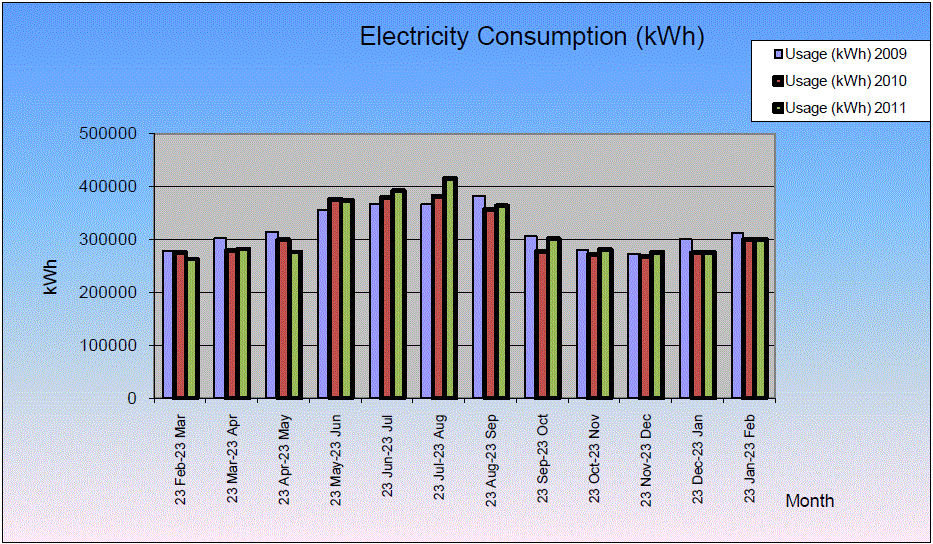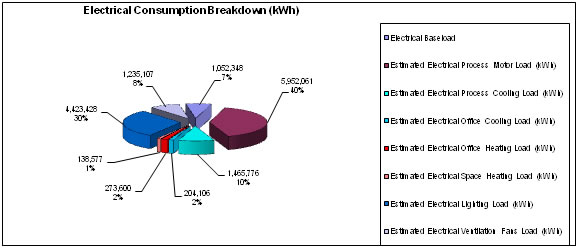Wesatyn Energy Management measures can reduce your annual energy consumption by up to 45%. These large-scale tangible results can only be achieved by utilizing the technology, engineering know-how and years of experience that Wesatyn has to offer.
The Wesatyn energy audit includes:
- Energy consumption analysis of gas, hydro and water.
| New regulations as of July 11, 2009 demand that any facility that emits 50 Kilotonne or more of CO2 will be required to file a report of their overall emissions to environment Canada by June 1, 2010. Talk to us early to see how we could assist! |
- Building envelope and roof structure evaluations.
- Lighting and lighting controls analysis.
- Base building mechanical equipment design and efficiency (HVAC & Automation) evaluation.
- Domestic and waste water consumption and disposal evaluations.
- Identification of energy savings measures.
- The development of solutions for each, energy saving measure with costs of implementing each measure.
- Evaluation of Solar Power generation as an alternative power source.
- Simulation of simple payback plans.
- Implementation of the identified cost savings measures.
- Incentive recovery from various agencies, as available.
- Project warranty and monitoring for a period of one year from commission.
Typical areas of the audit
- Chilled water and cooling systems
- Heating and heat loss recovery
- Pumps, motors and drives
- Boilers efficiency-steam and water
- Condensate systems
- Demand ventilation
- Compressed air systems
- Water consumption and treatment
- Power Quality, power factor and power harmonics
- Lighting and controls
- Indoor Air Quality (IAQ) and Filtration
Wesatyn will assist you with your energy management initiatives and develop programs that help you reduce your energy footprint, realize cost savings and contribute to the conservation of our natural resources.
The mission at Wesatyn is to improve the operating efficiencies of your facility.
Energy Solutions
Understanding energy consumption, reducing waste, and generating energy savings is a complex undertaking. For maximum results the work involves a comprehensive list of initiatives that progressively lead to the solution. Wesatyn brings together an experienced team of professionals, dedicated to deliver these solutions with guaranteed results.
- Design and retrofit of heating systems using mid and hi-efficiency boilers
- Design of piping
- Replace inefficient cooling systems (Chillers, Package units, cooling towers condensers)
- Upgrade ventilation systems
- Measure and balance water and air distribution systems
- Recommend building envelop modification/changes
- Search and seal air infiltration into buildings
- Replace inefficient lighting systems and bulbs
- Upgrade or install new automation
- Implement cost effective maintenance plans
- Measure and monitor energy consumption
- Energy tracking and trending tools
- Asset tracking and management programs
Benefits
Measurable and documented results clearly illustrate the value of energy efficiency management and its impact to the bottom line. Specific benefits realized include:
- Reduced energy consumption
- Improved operating efficiency
- Energy cost savings
- Longer equipment life
- Lower operating costs
- Performance improvement of equipment
- Environmental impact- by eliminating CO² emissions
Wesatyn can also provide assistance for the development of LEED certification program of your buildings.
Wesatyn Energy Management measures can reduce your annual energy consumption by up to 45%. These large-scale tangible results can only be achieved by utilizing the technology, engineering know-how and years of experience that Wesatyn has to offer.
Energy Management - PDF
An energy conservation and demand management plan begins with an energy audit of the facility. It is critical to benchmark the demand and consumption pattern of energy in a facility in order to develop any energy efficiency strategies. Energy audits provide a ‘DNA’ of the facilities energy profile. Understanding and analyzing the energy profile is the primary step in the development of the energy savings plan.
 Through our computer aided simulations we assess and allocate the energy usage in a facility. The energy profile helps us identify energy saving measures that can be implemented and thereby helping the development of a preliminary budget for the plan.
Through our computer aided simulations we assess and allocate the energy usage in a facility. The energy profile helps us identify energy saving measures that can be implemented and thereby helping the development of a preliminary budget for the plan.
Government incentives are available to offset part of the cost associated with energy audits. Once approved projects also qualify for government incentives for the implementation of the project.

A better global understanding of the impact of greenhouse gases has finally got the attention of the government and corporations. The Carbon Dioxide (CO2) emissions thresholds are being closely monitored have been under scrutiny for some time now. The federal thresholds for CO2 emissions have coming down.
In the coming months many small and medium sized business operators will find that they may by law, be required to report their facilities carbon footprint. Until now, the reporting regulations by the Federal Government have been only for about 1000 companies. For most companies the reporting requirements include the total consumption of fossil fuels and electricity used in:
| New regulations as of July 11, 2009 demand that any facility that emits 50 Kilotonne or more of CO2 will be required to file a report of their overall emissions to environment Canada by June 1, 2010. Talk to us early to see how we could assist! |
- Production
- Air-Conditioning
- Heating
- Lighting
- Transportation
- Business Travel
- Raw Materials
- Office Supplies
In short the reporting requirements as per the regulations for some companies may include all forms of consumption from natural resources and materials that is used in business and contribute directly or indirectly to CO2 emissions.
A multitude of additional components will need to be included in the reports depending on the type of the facility such as:
- Hydrofluorocarbons and per-fluorocarbons found in Refrigeration and Air-conditioning equipment.
- SP6S commonly used in high-voltage electrical equipment
Regulation
Prior to July 11, 2009, the federal government required that any facility that 100 kilotonnes (Kt) or more of CO2 equivalent must annually file a report, of their emissions with Statistics Canada.
As of July 11, 2009, this 100 Kt reporting threshold has been dropped to 50 Kt annually, and the report must now be filed with environment Canada on or before June 1, 2010. Environmentalist and climate change watchers believe that this threshold is temporary and will come down. The BC government is pushing for a regulation of 10Kt.
Please talk to us to see how we could help.
The impact of energy management initiatives can only be verified by documenting and tracking the energy consumption data. Some companies do get their energy profile summarized to them monthly or quarterly by energy profilers. However energy profile will not provide all of the information that is required to make critical and timely executive decisions that are required to impact positive changes within the facility.
Our energy tracking programs are customized and client specific depending on their operations. Our software will report on:
- Equipment Performance
- Production efficiency
- Controlling energy consumption
- Equipment maintenance costs
- Equipment replacement costs
- Life cycle costs
- Energy intensity
- Major anomalies in a 24 hour cycle.
Please talk to us about our Real Time Energy Tracking and Profiling tools.


